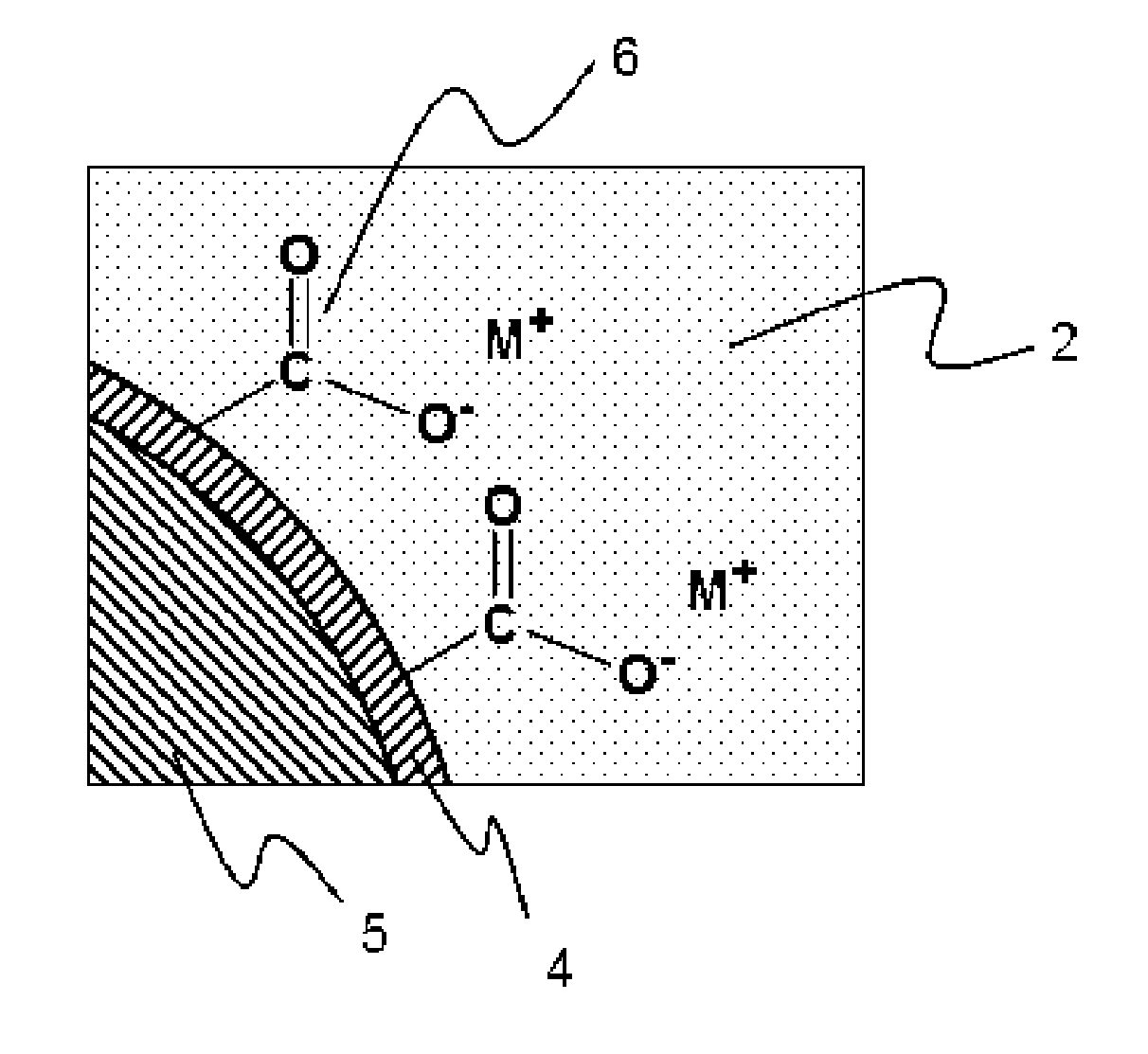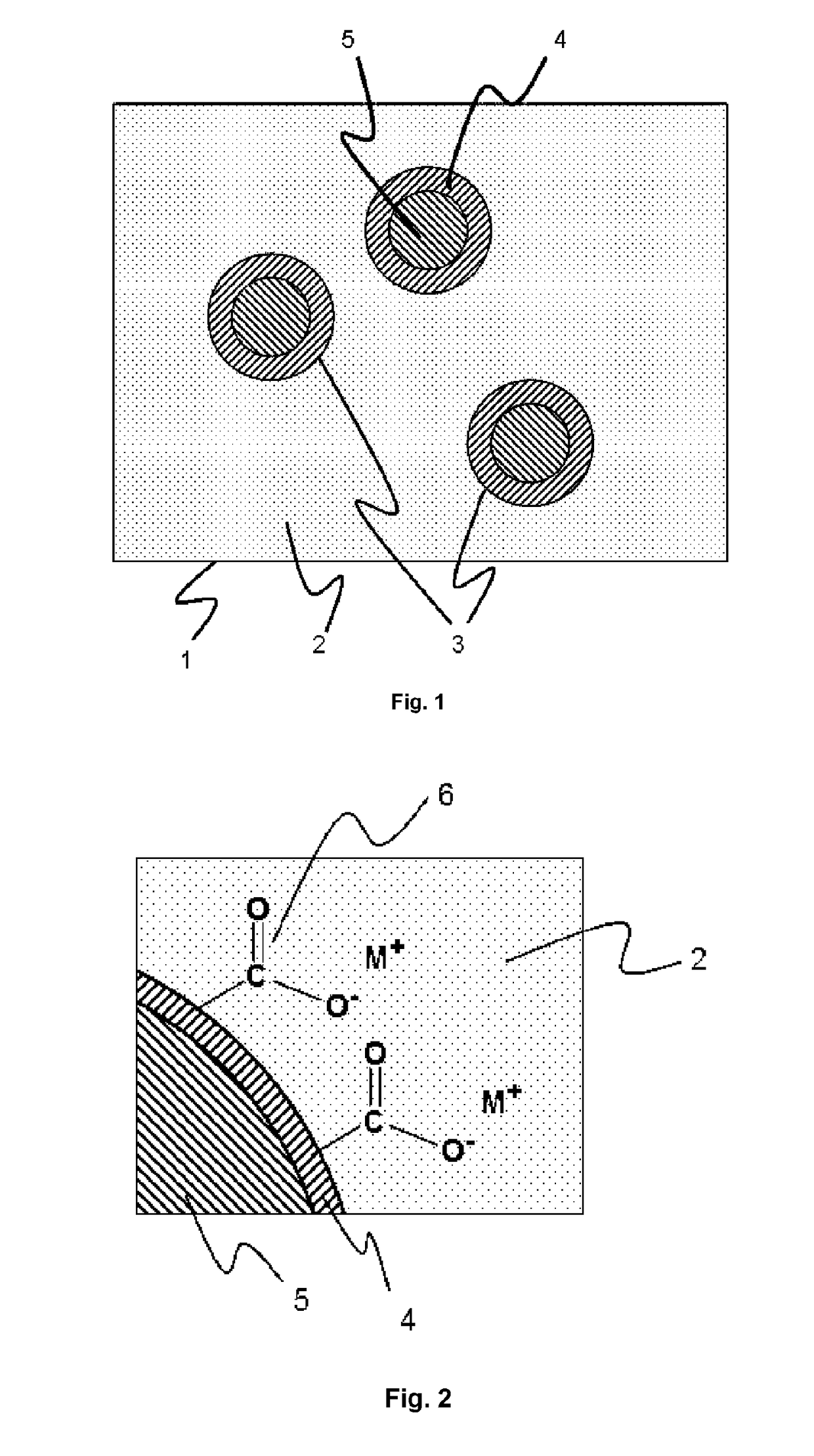Self-dispersing capsules
- Summary
- Abstract
- Description
- Claims
- Application Information
AI Technical Summary
Benefits of technology
Problems solved by technology
Method used
Image
Examples
example 1
[0255]This example illustrates the synthesis of the amphoteric surfactants required for manufacturing the capsules according to the present invention. The synthesized amphoteric surfactants all contained less than 2% of tertiary amines as side products.
Synthesis of Surfactant-1
[0256]Surfactant-1 was synthesized according to the following scheme:
[0257]92 g (0.5 mol) dodecyl amine was dissolved in 30 ml 1-methoxy-2-propanol. The mixture was heated to 50° C. and 43 g (0.5 mol) crotonic acid was added. The mixture was heated to 120° C. for 18 hours. After completion of the reaction, the mixture was allowed to cool down to 80° C. and added slowly to 600 ml acetone. The mixture was allowed to cool down to room temperature. Surfactant-1 was isolated by filtration, washed with 300 ml acetone and dried. 106 g (yield=77%) of Surfactant-1 was isolated. Surfactant-1 was analyzed, using LC-MS on a Bruker Esquire-LC instrument. The structure of surfactant-1 was confirmed and no contamination was ...
example 2
[0264]In this example by making magenta inkjet inks, nanocapsules made using a commercially available amphoteric surfactant (Mackam™ 151L) are compared with nanocapsules made using an amphoteric surfactant of specifically prepared for the present invention in Example 1.
Preparation of Colour Pigment Dispersion RDISP-1
[0265]This dispersion of Qolortech RED RD-1221 was prepared using commercial surfactants.
[0266]A mixture of 4.85 g Mackam 151L (after removal of the ethanol from the commercial solution), 3.25 g L-lysine, 5 g Qolortech red RD-1221 and 73 g water were milled for 48 hours using a ball mill, filled for 40% with 0.4 mm yttrium stabilized zirconia beads. During the milling a considerable amount of a persistant foam was formed. The dispersion could not be used immediately to continue the nanocapsule synthesis. Several hours were required before the foam disappeared to a level where the manufacturing process of the nanocapsules COMP-CAP-1 could be continued. 0.1 g of Olfine E10...
example 3
[0276]This example illustrates the compatibility of the synthetic methodology with a multitude of pigments.
Preparation of Colour Pigment Dispersion CDISP-1
[0277]This dispersion CDISP-1 was prepared using a mixture of surfactants made in Example 1.
[0278]A mixture of 3.5 g Surfactant-1, 0.6 g Surfactant-2, 2.5 g L-lysine, 10.5 g Sunfast Blue 15:3 and 69 g water were milled for 24 hours using a ball mill, filled for 40% with 0.4 mm yttrium stabilized zirconia beads. 0.1 g of Olfine E1010 was added. Foam during the dispersion could be controlled reasonably well.
Synthesis of capsules INV-2
[0279]40 g of Trixene™ BI7952 was evaporated under reduced pressure to remove 1-methoxy-2-propanol. The residue was dissolved in 30 g ethyl acetate. 20 g of Takenate™ D110N was added. This solution was added to the dispersion CDISP-1 and dispersed using an Ultra-Turrax at 24000 rpm for 5 minutes. 54.9 g water was added and the pressure over the mixture was gradually reduced to 150 mm Hg. The ethyl aceta...
PUM
| Property | Measurement | Unit |
|---|---|---|
| Fraction | aaaaa | aaaaa |
| Fraction | aaaaa | aaaaa |
| Amphoteric | aaaaa | aaaaa |
Abstract
Description
Claims
Application Information
 Login to view more
Login to view more - R&D Engineer
- R&D Manager
- IP Professional
- Industry Leading Data Capabilities
- Powerful AI technology
- Patent DNA Extraction
Browse by: Latest US Patents, China's latest patents, Technical Efficacy Thesaurus, Application Domain, Technology Topic.
© 2024 PatSnap. All rights reserved.Legal|Privacy policy|Modern Slavery Act Transparency Statement|Sitemap



